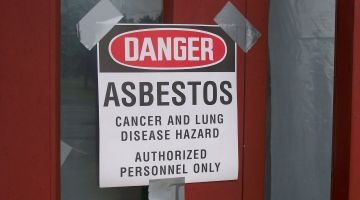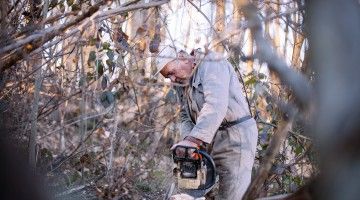Plain-language summaries
Institute for Work & Health (IWH) plain-language summaries condense research findings in various formats. At Work articles explain study results with comments from the study leads. Research Highlights summarize journal articles in easy-to-read, digest formats. Sharing Best Evidence summaries highlight findings from systematic reviews and other types of reviews conducted or led by IWH researchers. Issue Briefings discuss key research findings from IWH or elsewhere on topics that are of particular interest to policy-makers.

At Work article
New cases of mesothelioma and asbestos-related lung cancer in one year cost $1.9B
First-ever estimate of the economic burden of asbestos looks at newly diagnosed cases in Canada in 2011
Published:

At Work article
Disability leave duration rises with age, chronic conditions
Older workers with arthritis, depression and cancer tend to be off work the longest, STD/LTD data suggest
Published:

At Work article
Forceful repetition a carpal tunnel risk factor
Workers who often use their hands in forceful gripping and pinching motions face a higher risk of developing carpal tunnel syndrome (CTS), a painful condition that causes tingling, numbness and weakness in the hand and sometimes requires surgery
Published:

At Work article
PREMUS 2016 brings together MSD prevention scientists and practitioners to share evidence
Keynotes discussed latest findings on carpal tunnel syndrome, construction safety culture, sitting and standing, and sex/gender lens in MSD research
Published:

At Work article
Peer coaching on patient lifts lowers injury, but at a small cost
IWH cost-benefit analysis finds training program nearly cost-neutral while lowering injury rates by a third
Published:

At Work article
Monitoring progress key in implementing return-to-work program: IWH study
Workplace study of innovative return-to-work program highlights progress and opportunities for improvement
Published:

At Work article
Study finds COR employers have lower rates of serious injuries than those not in program
IWH researcher finds voluntary audit program effective in identifying safer employers
Published:

At Work article
OPM follow-up questions now available to help firms act on leading indicator scores
IWH, health and safety associations collaboration brings together research and field expertise
Published:

At Work article
DASH developers credit groundwork and ongoing support for measure’s 20-year success
In its 20th anniversary year, the DASH Outcome Measure continues to be used in ever broader contexts
Published:

Issue Briefing
Measuring the adequacy of workers’ compensation benefits in Ontario: An update
In 2011, an IWH Issue Briefing summed up research on the adequacy of earnings replacement benefits for injured workers with permanent impairments in Ontario and B.C. This update looks at more recent cohorts, after major changes in Ontario’s workers’ compensation legislation.
Published:

At Work article
PREMUS 2016 keynote speakers tackle leading-edge issues in MSD prevention
Topics include the risks of prolonged sitting or standing, the application of a gender lens, the role of safety climate and the risk factors for carpal tunnel syndrome
Published:

At Work article
Employers and doctors often have uneasy relationship in return to work, study finds
Interviews with Australian employers highlight problems with physicians over communication, trust
Published:

At Work article
New review finds motor control exercise reduces low-back pain, disability among sufferers
New review by Cochrane Back and Neck Review Group broadens options for people with low-back pain
Published:

At Work article
Tapping into personal networks to share research and improve evidence uptake
Stakeholder networks play a key role in the dissemination and uptake of IWH research
Published:

At Work article
Depressive symptoms common in first 12 months after work injury
Follow-up study by Institute for Work & Health finds depressive symptoms at six months after work-related injury a signal that poor mental health may persist at 12 months
Published:


Research Highlights
Workplaces that focus on both operations and safety can succeed at both
Workplaces that jointly manage operations and occupational health and safety (OHS) perform well at both, and no worse than workplaces that focus on only one. There’s no evidence that success in operations requires a trade-off with safety.
Published:

Research Highlights
Are older workers off work longer after an injury because of the nature of their injuries?
Older men and women with work-related injuries remain off work on benefits longer than other workers, and this longer time off work is not explained by the type or severity of their injuries.
Published:

At Work article
Distinct types of OHS vulnerability seen in young, temporary, small business employees
Tool developed by IWH measures three types of vulnerability to workplace health and safety risk
Published:

At Work article
Qualitative systematic review highlights new regulatory, implementation issues in OHS
Implementing OHS laws and regulations can be challenging in complex, non-standard world of work
Published: